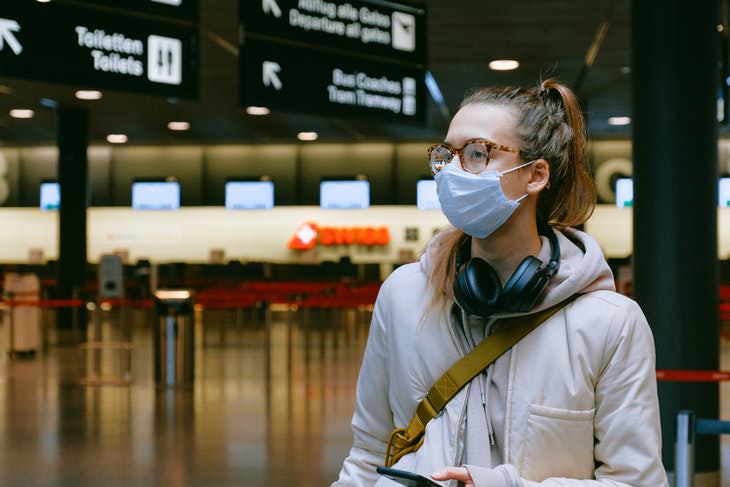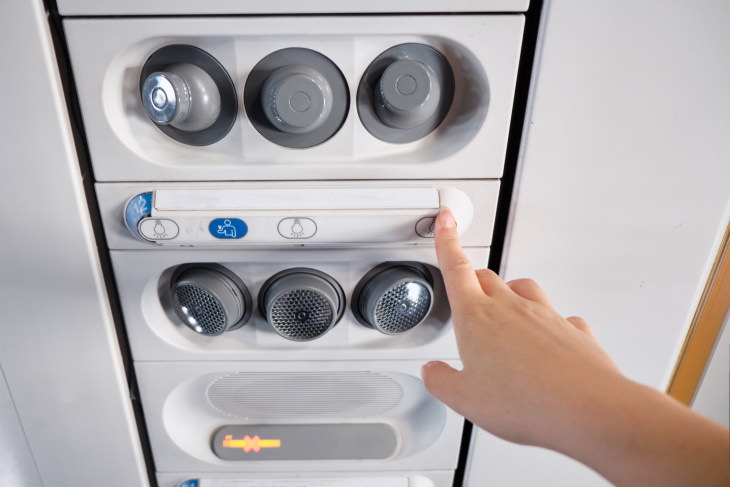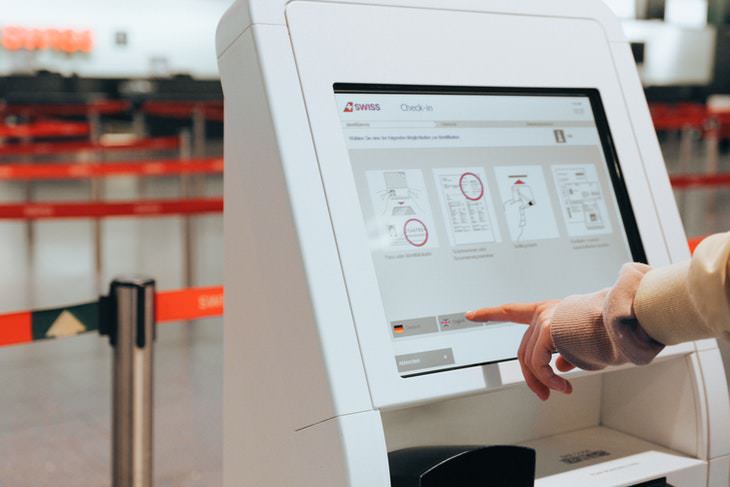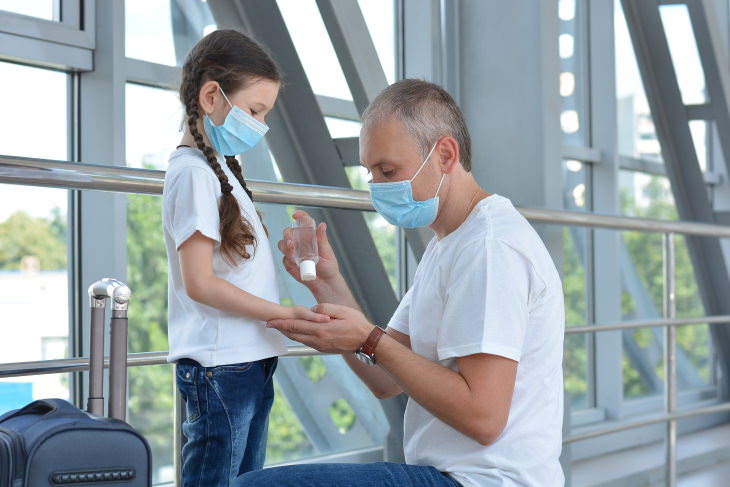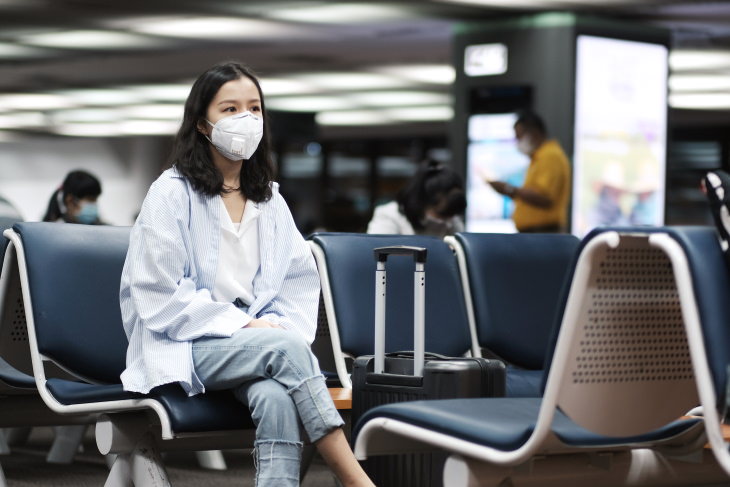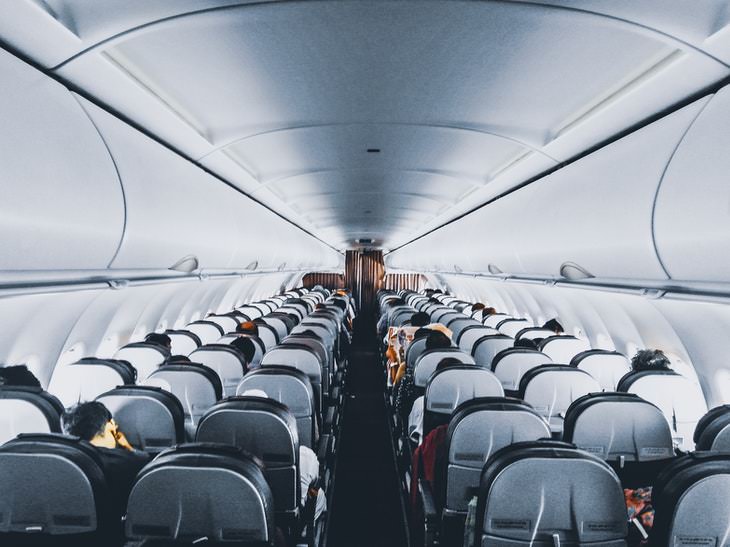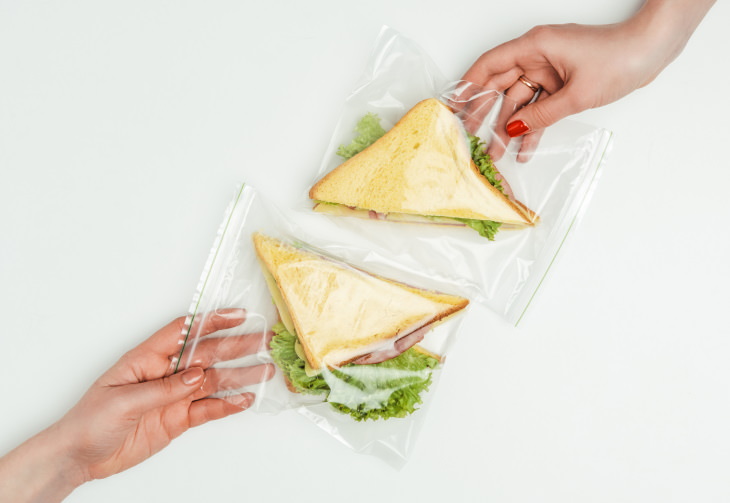1. Wear a face mask at all times
While face masks are not mandatory to wear in some countries and states, if you plan on traveling by plane, we highly recommend stocking up on either reusable cloth masks or single-use face masks, as most airlines require wearing a face mask at all times to protect you and others from germs. Face masks are a must-have tool these days, one that has been proven to be effective at preventing the spread of the novel coronavirus and much better than using a scarf or bandana as a face covering, for example.
Thus, we recommend taking several masks with you, so that you'd be able to replace them at least once daily, possibly even more often during a long-haul flight or layover. Experts also point out that you should avoid touching your face while traveling as a separate precaution. If you noticed that you've touched your face mask with dirty hands, replace it immediately, as your hands could have transferred germs onto the mask.
2. Open the air vents above your seat
Knowing that the coronavirus can spread through the air, it may seem counterintuitive to turn on the overhead air vents during a flight. However, it is exactly what you should be doing, and this is because most planes actually have quite sophisticated and effective air filtering systems installed, so breathing the air that comes out from an air vent is much safer.
The air vents create an air barrier in your seating area, which will shield you from germs and, at the same time, will ensure that all the potentially harmful particles are sucked in the plane’s filtration system to be neutralized.
3. Choose the seat near the window
Many airlines have reduced the capacity of each flight, leaving the middle seat in the plane free and impossible to book. However, many health experts say that this is still not enough and some passengers are at a greater risk of catching germs like the novel coronavirus than others.
According to research, the seats that have the lowest risk of contamination and exposure to harmful germs are window seats, so select a window seat when booking or checking into a flight, if possible. The seats most often affected by contaminants are the aisle seats, so avoid those whenever possible.
4. Check-in from home instead of the airport
Both self-check-in stands and check-in counters with cashiers are potentially-dangerous places at the airport, as thousands of people use them every day. Apart from that, these places are often surrounded by cues of people, which is another obvious risk factor. This is why experts recommend checking in from your home computer or phone instead - many airlines allow you to check in to a flight 24 hours or more ahead of time.
Furthermore, you don't even need to print your tickets in many cases, all you need is to download the boarding pass to your smartphone and most airport scanners will be able to read them without any problem and without unnecessary contact with airport staff.
5. Opt for cashless payment options at the airport
The advantage we have over previous generations that had to deal with pandemics is the technology that allows us to minimize contact with potential carriers of the disease and their belongings. So, let's use those innovations to our advantage, and opt for cashless payments, be it paying with your card or making virtual payments with your phone, when shopping at the airport.
Most airports will have at least one cashless payment method available for you, so why not use it? After all, the less contact you have with other people and objects, especially cash, the better off you are at protecting yourself from germs.
6. Stock up on disinfectants
If you've traveled by plane at least once in the past few years, you will know of the harsh restrictions airports set for liquids, including disinfectants. Due to the ongoing Covid-19 pandemic, however, some airports have lifted the restriction for hand sanitizer according to the TSA, allowing travelers to put a bottle of hand sanitizer that's up to 12 ounces (350 ml) large in carry-on bags. Keep in mind that all other liquids in bottles over 3.4 oz (100 ml) are still not allowed in carry-on luggage.
So, take advantage of this possibility, and don't forget to bring supplies that will be enough to clean your hands, phone, and immediate environment throughout your journey - this means stocking up on hand sanitizer, face masks, and sanitizing wipes.
7. Avoid crowded places
We understand this is easier said than done. Still, social distancing is one of the most effective and necessary precautions we know against the novel coronavirus. So, try to keep the distance of at least 6 ft (2 m) from other people and move around as little as possible when you're at the airport.
Experts advise skipping the duty-free shops and restaurants altogether and going directly to the closest empty waiting isle near your gate. It is also recommended to board last, letting everyone else board the plane first to avoid being stuck in a crowded line with many social distancing rule breakers.
8. Disinfect high-touch surfaces
Although airlines have definitely increased their cleaning practices during the pandemic, don't trust them completely, especially since we know now that Covid-19 can remain active on plastic and metal surfaces for days. So make sure yourself that everything is spotless and germ-free before you sit down.
Take out those disinfectant wipes and hand sanitizers you brought with you and give the most-used spots a quick clean. The areas that get touched the most are the armrest, the seatbelt buckle, the headrest, tray table and seat, and media controls, so focus on those.
9. Store personal items in your carry-on bag instead of your pockets
A little bit of organization goes a long way in protecting yourself from germs. When going through security, we customarily put all of our belongings, such as our wallets, keys, phones, glasses, and the like in those plastic trays, but it's not the smartest idea, as it turns out because everyone uses those trays.
So, instead of chucking all your personal belongings into the tray, put them in your purse, backpack, or any other carry-on bag and let that go through security to prevent often-touched items from contacting public surfaces.
10. Keep food in sealable plastic bags
It's no secret that bringing food with you on the plane is allowed, but in these special circumstances, you must consider how you package the food to protect it from contamination. The TSA, for example, now requires packing all food items in a plastic bag and also recommends you to send the food through the security scanner separately from your luggage to lower the likelihood of airport staff having to touch your belongings. We recommend resealable bags, as those will not let air through and ensure your food won't catch any germs.
Share this article with everyone who loves traveling!

